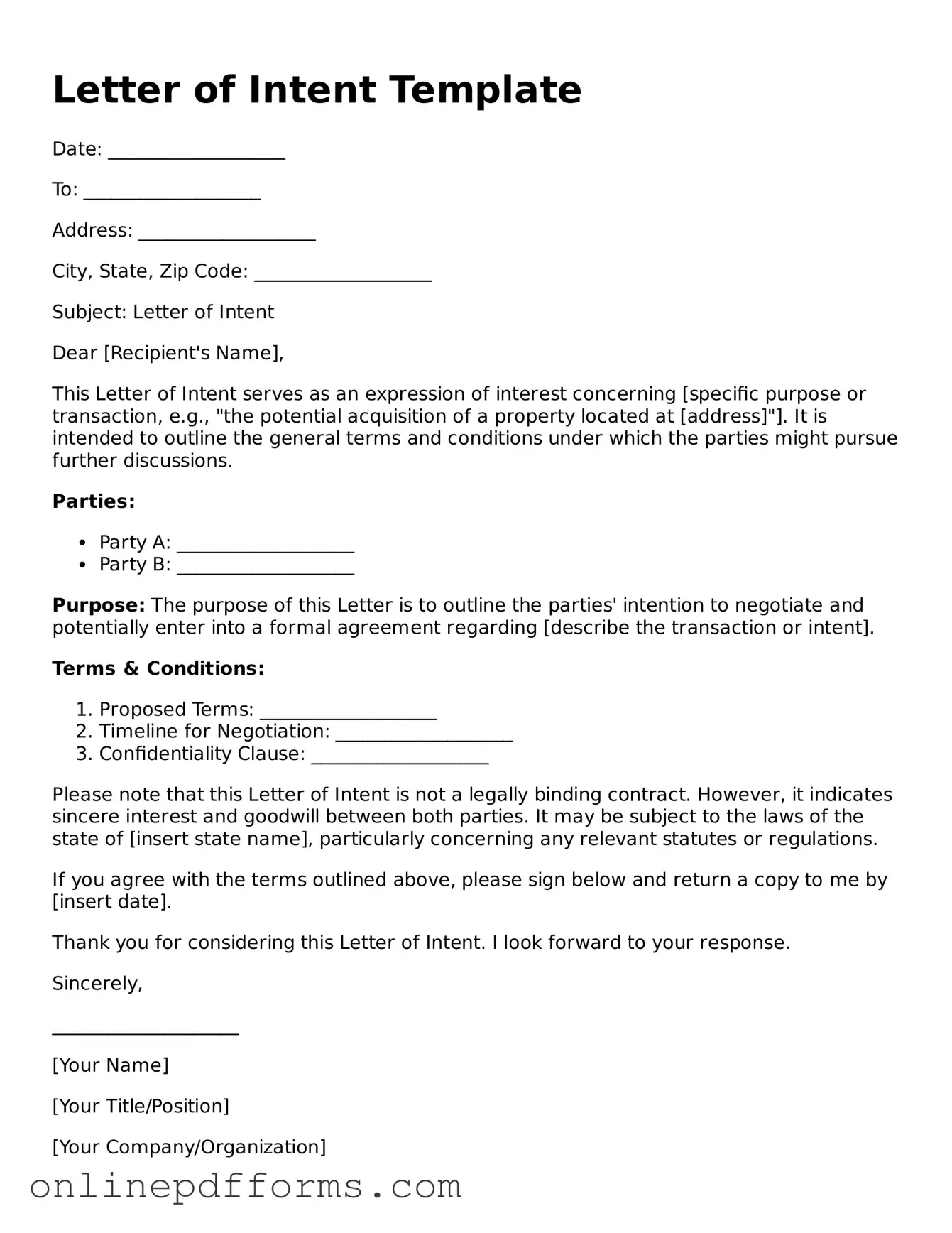A Memorandum of Understanding (MOU) is often compared to a Letter of Intent. Both documents serve as preliminary agreements that outline the intentions of parties involved in a potential transaction. An MOU may include more detailed terms and conditions than a Letter of Intent, but it still lacks the binding nature of a formal contract. The purpose is to establish a mutual understanding before entering into a legally binding agreement.
A Term Sheet is another document similar to a Letter of Intent. It summarizes the key terms and conditions of a proposed deal. While a Letter of Intent may express a party's intention to move forward, a Term Sheet often provides more specific details about the transaction, such as pricing, timelines, and responsibilities. However, like a Letter of Intent, it is usually non-binding and serves as a framework for further negotiations.
For those navigating the challenging process of establishing a corporation, it's essential to have the proper documentation in place. A key starting point is the Wisconsin Articles of Incorporation form, which not only serves as the official record for your business entity but also outlines vital details such as the name and purpose of your corporation. Don't miss the opportunity to set your entrepreneurial journey in motion by visiting pdftemplates.info/wisconsin-articles-of-incorporation-form/ to fill out the form!
A Non-Binding Agreement is closely related to a Letter of Intent. This type of agreement explicitly states that the parties do not intend to create any legal obligations. It can outline the intentions and expectations of the parties, similar to a Letter of Intent, but emphasizes that no party is legally bound until a formal contract is signed. This helps manage expectations while discussions are ongoing.
A Business Proposal may also share similarities with a Letter of Intent. Both documents are used to express interest in a business opportunity. A Business Proposal typically includes detailed information about the project, including objectives, strategies, and costs, while a Letter of Intent focuses more on the intention to enter into negotiations. Both can serve as starting points for further discussions.
A Partnership Agreement can be likened to a Letter of Intent in that it outlines the intentions of two or more parties to collaborate. However, a Partnership Agreement is a legally binding document that details the roles, responsibilities, and profit-sharing arrangements of the partners involved. In contrast, a Letter of Intent is often a preliminary step that leads to such binding agreements.
A Confidentiality Agreement, or Non-Disclosure Agreement (NDA), shares some characteristics with a Letter of Intent. Both documents can be used during the negotiation process to protect sensitive information. While a Letter of Intent outlines intentions regarding a potential deal, an NDA specifically focuses on safeguarding confidential information shared during discussions, ensuring that parties do not disclose proprietary details to outsiders.
A Letter of Understanding (LOU) is another document that serves a similar purpose. Like a Letter of Intent, an LOU expresses the intentions of the parties involved but may be more informal. It can outline mutual goals and expectations without the rigidity of a formal contract. While it may not have the same legal weight as a contract, it still provides a clear framework for cooperation.
A Purchase Agreement is a formal document that outlines the terms of a sale. While it is legally binding, it often begins with discussions that may be documented in a Letter of Intent. The Letter of Intent sets the stage for negotiations and can lead to the more detailed Purchase Agreement that finalizes the transaction. In this way, the Letter of Intent acts as a precursor to more formal agreements.
Finally, a Letter of Commitment can be compared to a Letter of Intent. Both documents express a willingness to engage in a particular course of action. However, a Letter of Commitment may imply a stronger intention to proceed, often including specific commitments from the parties involved. While a Letter of Intent may leave room for negotiation, a Letter of Commitment indicates a more definitive path forward.
